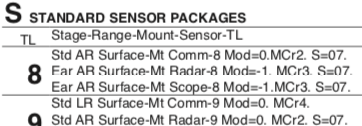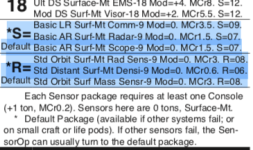The Type WH fuel barge is service barge for refueling ships in orbit. It's designed to fill its tanks from a world surface, then slowly lift into orbit. When its fuel levels are low, it reenters, refuels, and lifts back up. A sufficiently advanced TL could automate this with a sophisticated computer. Alternately a ship's brain could be installed to operate the ship. Or it can simply be flown by wire. Or a pilot could fly it up and then debark into an orbital station. And so on.
This example model has a flotation hull and landing legs, so it can do water landings as well as downport landings. Airframing makes it easier to handle in an atmosphere -- which is very helpful since it relies on lifters only, with neither maneuver drive nor power plant. Its fuel intakes allow gulping-and-refining water from seas or rivers at 1000 tons per hour. It has a Model/1 computer; a spacious bridge for three crew, ten spacer niches, and a bit of common space. It's still cramped, and is not intended for trips further than orbit (and then transfer off-ship).
Round trip time is nominally one standard day: 8 hours (plus or minus) to de-orbit, a few hours to refuel, optional hours for ground maintenance, and 8 hours back to orbit (plus or minus).
It holds up to 2000 tons of fuel and 250 tons of cargo. The extra spacer niches and cargo are for incidental transfer to and from orbit.
With maneuver-boosters (sold separately), this barge could conceivably cross interplanetary distances.
There is NO room for passengers.
MCr 250 for this model. There are a bazillion other versions of it.
Fuel Barge WH-ZA00 MCr250.8
Actual volume: 2385 tons
Crew comfort: -2
Passenger demand: -5
This example model has a flotation hull and landing legs, so it can do water landings as well as downport landings. Airframing makes it easier to handle in an atmosphere -- which is very helpful since it relies on lifters only, with neither maneuver drive nor power plant. Its fuel intakes allow gulping-and-refining water from seas or rivers at 1000 tons per hour. It has a Model/1 computer; a spacious bridge for three crew, ten spacer niches, and a bit of common space. It's still cramped, and is not intended for trips further than orbit (and then transfer off-ship).
Round trip time is nominally one standard day: 8 hours (plus or minus) to de-orbit, a few hours to refuel, optional hours for ground maintenance, and 8 hours back to orbit (plus or minus).
It holds up to 2000 tons of fuel and 250 tons of cargo. The extra spacer niches and cargo are for incidental transfer to and from orbit.
With maneuver-boosters (sold separately), this barge could conceivably cross interplanetary distances.
There is NO room for passengers.
MCr 250 for this model. There are a bazillion other versions of it.
Fuel Barge WH-ZA00 MCr250.8
Actual volume: 2385 tons
Crew comfort: -2
Passenger demand: -5
Code:
Tons Component MCr Notes
------- ----------------------------------- ----- --------------------
2400 Airframe Hull, lifters, 24 a/l free 170 A, lifters, 24 a/l free
24 Landing legs with pads 24
24 Flotation hull 24
50 25x Fuel Intakes with Purifier 27.5 #25 40 t/hr
1 Computer Model/1 std 1.5
1 Life Support Standard 1 10 person-months
6 Spacious Bridge 0.4 1cc 2op 0ws
1 Crew Common Fresher 1 10 crew
10 10x Spacer Niche 1 #10 1 crew
16 4x Crew Commons 0 #4
2000 Cargo Hold Bulk Liquid 0
250 Cargo Hold Basic 0
2 Cargo Lock 0.4
Last edited:


